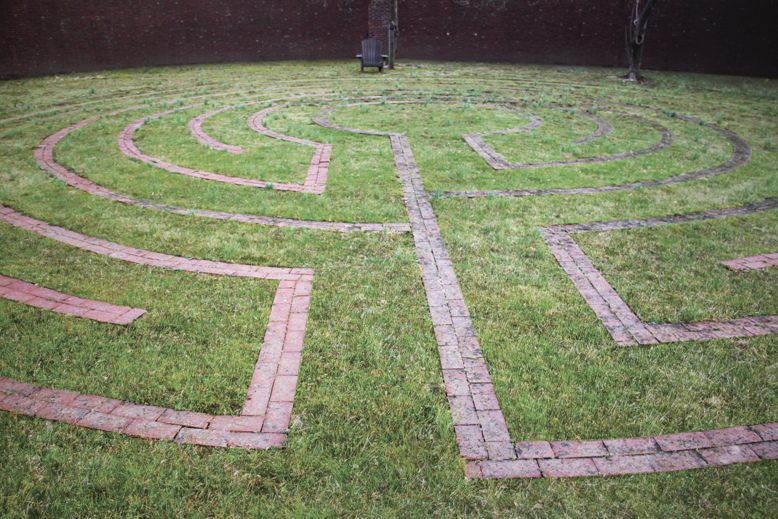
In Greek mythology, King Minos of Crete ordered the construction of a high-walled labyrinth to protect his people from the vicious half-man, half-bull Minotaur. The monster was trapped in the middle of the labyrinth and slain.
The image of the labyrinth reappeared over the centuries in the writings of Dante and Jorge Luis Borges and in the art of Picasso and M.C. Escher. It even turned up in an episode of the Showtime TV series Dexter.
Not to be outdone, New Jersey has its share of labyrinths intended for spiritual or intellectual inspiration rather than protection from savage beasts. Sometimes referred to as prayer labyrinths, they can be found in churches and parks throughout the state. Typically, they are built in memory of a loved one, by Scout troops, or because of metaphysical energy that’s said to exist at certain locations.
Modern labyrinths range from simple winding pathways within a circle to more complex patterns. Stones, bricks and pavers mark the pathways. There are no great walls—or monsters, for that matter. The beginning and end of the path are interchangeable, and (unlike a maze) there are no dead ends. Most labyrinths are based on historic designs, but each is likely to be unique. “In the mid-1990s, the Christian churches were more disposed to the medieval design,” says David Gallagher, executive director of the online database of the Labyrinth Society. More recently, he says, “designs from other eras are being used.”
St. Joseph’s Church in Hillsborough has a beautifully maintained Chartres Labyrinth, inspired by the the 13th-century original at France’s Chartres Cathedral. Hillsborough’s version uses red scalloped brick and grey stones and measures 40 feet in diameter. It took me about 15 minutes to complete the 11 circuits. As I surrendered to its curves and loops, my mind cleared and I experienced a sense of wisdom and empowerment. Even if you don’t walk the labyrinth, the intricate pattern, set amid a circle of evergreen trees, can be enjoyed from an adjacent bench.
The Morristown Unitarian Fellowship labyrinth is a moss-and-brick path at the bottom of a long hill. Wind chimes in the surrounding trees add to the serene and picturesque setting.
The labyrinth at Friends School in Moorestown has seven circuits that have become overgrown, a gentle reminder of the maintenance required for even the simplest labyrinth.
To find the labyrinth nearest you, visit this website.
